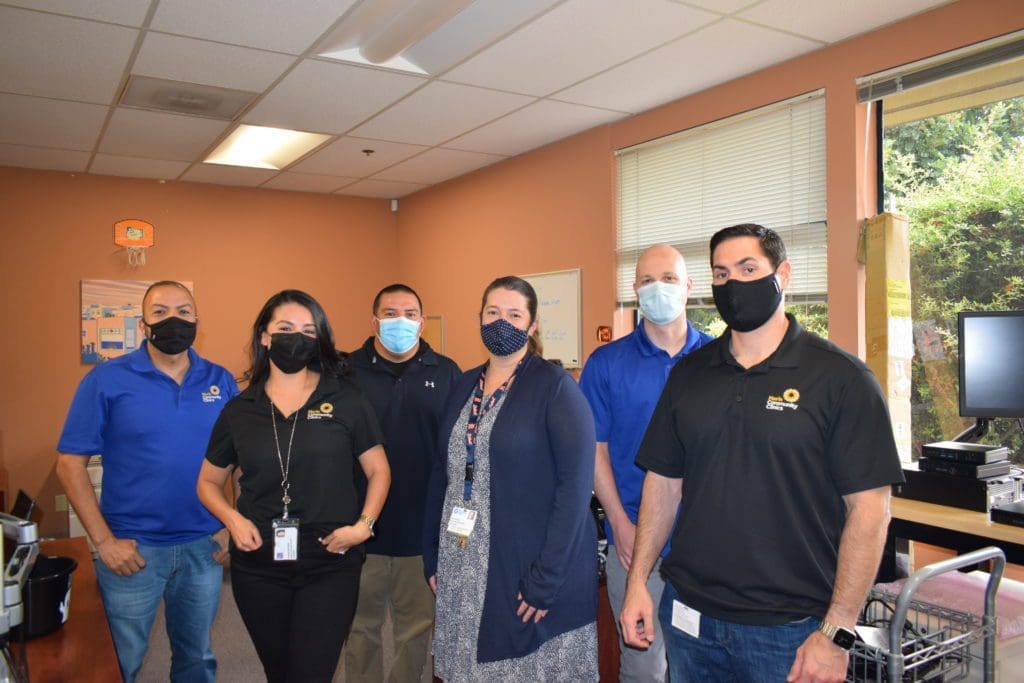
IT Team: Ernest Rodrigues, Vanessa Monsibaiz, Josue Alvarado, Leah Canvasser, Jeff Morre, Daniel Escobar (not pictured: Will Diaz & David Hunter)
If life comes at you fast, as they say, then technology comes at you like a bolt of lightning. It’s unpredictable, overwhelmingly powerful, and has the ability to change the world around it. By the time you’re hearing about it, a technological advancement has already struck (and another one is on the way). Such is the nature of working in IT. So when the COVID-19 pandemic abruptly upended daily life, potentially bringing everything to a screeching halt, Leah Canvasser, Chief Information Officer, began navigating the storm. “It required an immediate response,” said Canvasser. “We had to pivot to remote work for staff, and telehealth visits for patients.”
Under normal circumstances, such a rollout would require weeks (if not months) of research, testing, process planning, and employee training. In business jargon, it’s called change management. Unlike large-scale corporate healthcare consortiums, most Federally Qualified Health Centers (FQHCs), including the Clinics, didn’t have all of the resources in place to integrate the technology, largely due to limitations and restrictions around Medi-Cal coverage extending to telehealth. The public health emergency prompted California policymakers to temporarily lift restrictions that previously prevented Medi-Cal enrollees from accessing such services and FQHCs from getting reimbursed for telehealth visits. The Clinics’ IT team sprung into action.
They acquired and configured new hardware and software that enabled the organization to continue daily operations. They set up employees for remote-work success and deployed new telehealth software enabling providers and patients to connect seamlessly via virtual visits. Most impressively, they did it in under a week, continuing to fine-tune systems throughout the year.
The Other Kind of Virus
It wasn’t just connecting staff and patients that the IT team needed to account for. The number of cybersecurity threats rocketed over the past year. Malicious virus and ransomware attacks disguised as “COVID support services” and other phishing scams targeted the work-from-home structure – where less robust internet security and home Wi-Fi networks meant increased susceptibility. “We strengthened the redundancy in our system back-ups, boosted anti-virus and malware detection measures, and continue to maintain rigorous update, access, and audit policies,” explained Canvasser. “We boosted staff training and special announcements during peak concerns.”
Despite the initial storm-like circumstances, the digital enhancements and the team’s bold response are paying off, setting the Clinics up to sustain telehealth services in the future. The goal is not to replace necessary in-person visits, but to enable more convenient options and more accessibility for patients.
Patient Access Expanded with Virtual Care Visits

